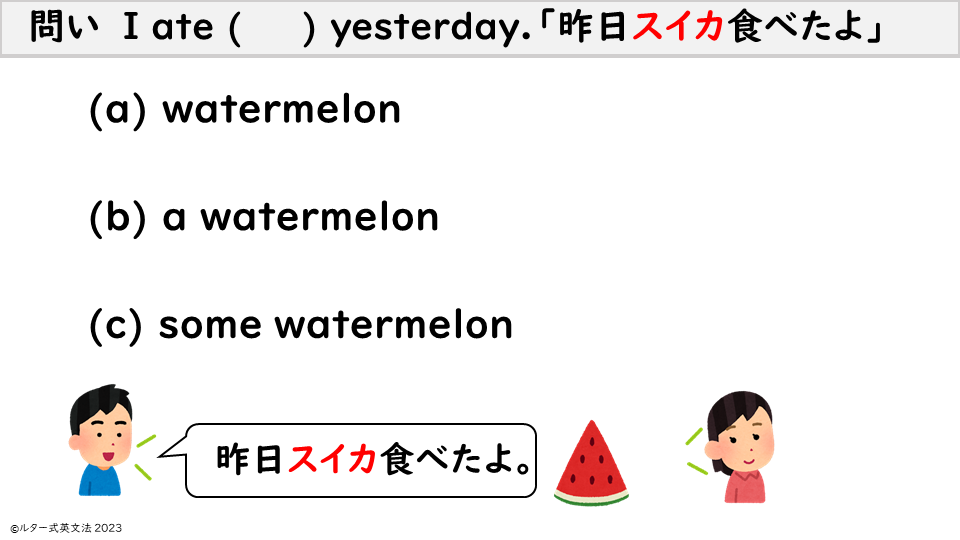

【英語クイズ】を通じて、名詞と冠詞・形容詞の使い方を考えてみましょう!
「対比を避ける【some】と対比説明する【無冠詞】を使い分けましょう!」
1)画像で1枚ずつ

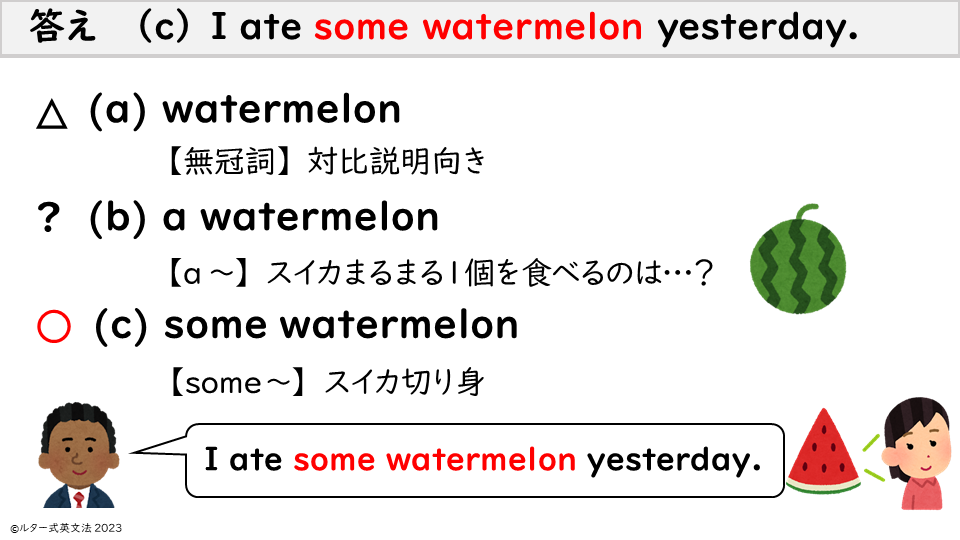
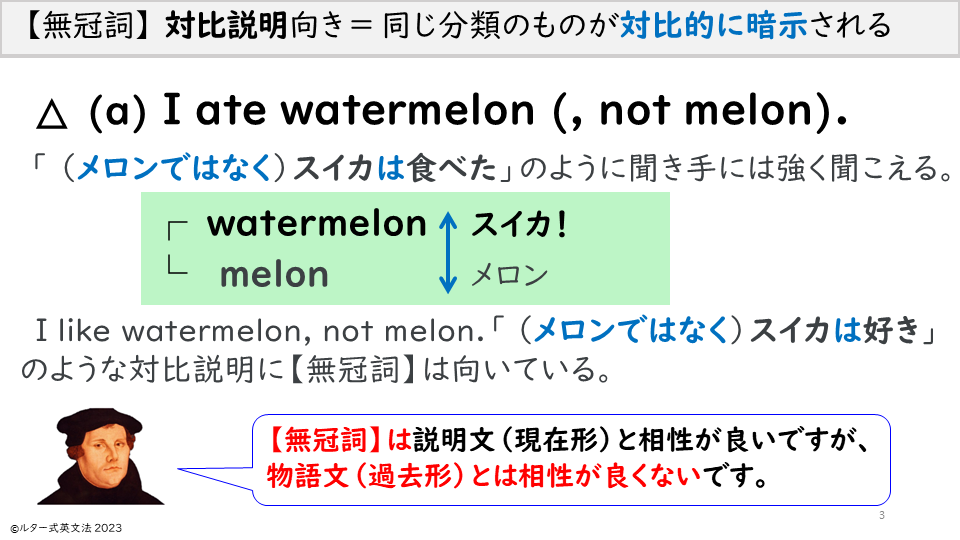

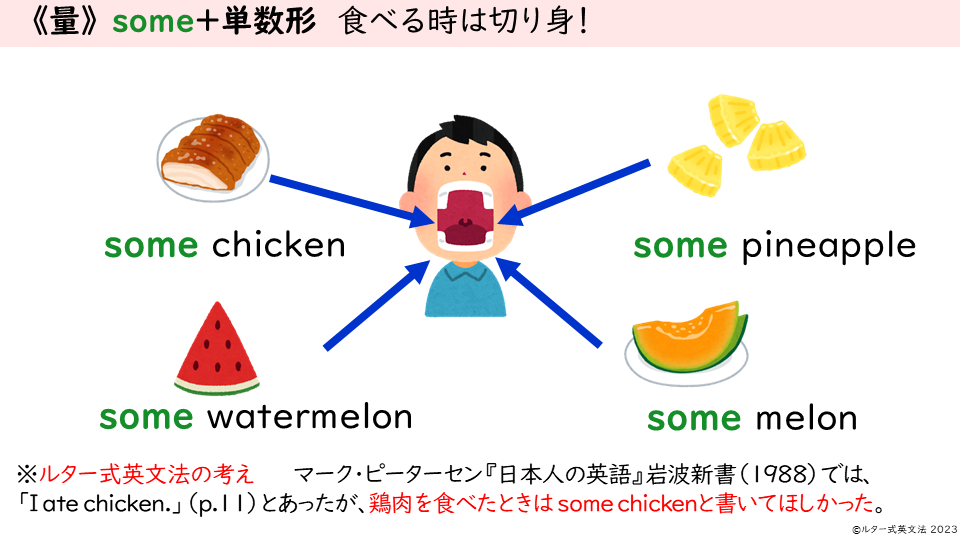
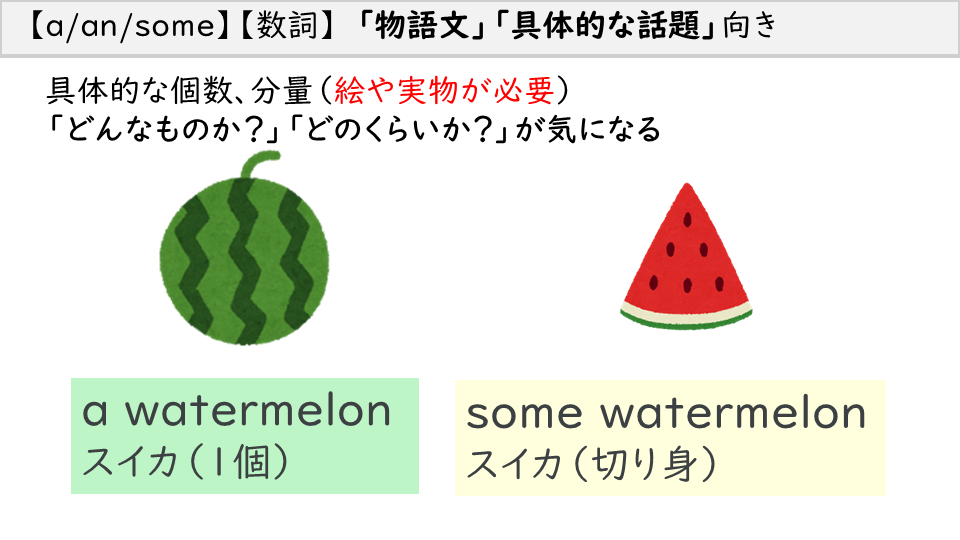
![[no article] is a contrast explanation, [some] does not imply other things being contrasted = only the thing under discussion is presented](https://eibumpoluther.com/wp-content/uploads/2023/01/0ae7c62e50dc705df75843b104ce66cd-1.png)
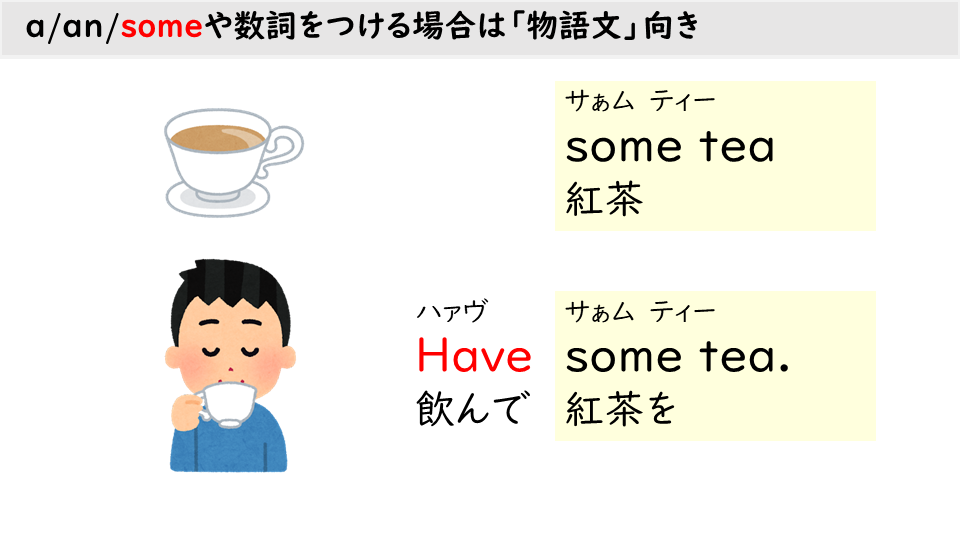


watermelon/a watermelon/some watermelonの使い分け
(a)【無冠詞単数形】話し言葉での対比説明向き(数えられない名詞=量を量るもの)
(b)【a/an +単数形】①「どんな?」が気になる(他に1個以上ある!) ②丸々1個
(c)【some+単数形】①対比せずそのものだけ話題にする ②ある程度の量(1個ではない!)
2)〈Quiz〉スライダー
3)文字で確認
問い I ate ( ) yesterday.「昨日スイカ食べたよ」
I ate ( ) yesterday.
(a) watermelon
(b) a watermelon
(c) some watermelon

答え (c) I ate some watermelon yesterday.
△ (a) watermelon 【無冠詞】 対比説明向き
? (b) a watermelon 【a ~】 スイカまるまる1個を食べるのは…?
○ (c) some watermelon 【some ~】 スイカ切り身

【無冠詞】 対比説明向き = 同じ分類のものが対比的に暗示される

【無冠詞】は説明文(現在形)と相性が良いですが、
物語文(過去形)とは相性が良くないです。
△ (a) I ate watermelon (, not melon).
「 (メロンではなく)スイカは食べた」のように聞き手には強く聞こえる。
┌ watermelon スイカ!
└ melon メロン
I like watermelon, not melon.「 (メロンではなく)スイカは好き」のような対比説明に【無冠詞】は向いている。

《数》 a/an +単数形 大きい果物丸ごと、食べる?(食べない!)
マーク・ピーターセン『日本人の英語』
「鶏を一羽食べてしまった」で有名になった a chicken(まるまる一羽の鶏)

《量》 some+単数形 食べる時は切り身!

※ルター式英文法の考え
マーク・ピーターセン『日本人の英語』岩波新書(1988)では、
「I ate chicken.」(p.11)とあったが、
鶏肉を食べたときは some chickenと書いてほしかった。
some chicken
some watermelon
some pineapple
some melon

【a/an/some】【数詞】 「物語文」「具体的な話題」向き
具体的な個数、分量(絵や実物が必要)
「どんなものか?」「どのくらいか?」が気になる
a watermelon スイカ(1個)
some watermelon スイカ(切り身)

a/an/someや数詞をつける場合は「物語文」向き
【無冠詞】は対比説明、
【some】は対比される、他のものを暗示しない=話題のものだけを提示
some watermelon スイカ(切り身)
I had some watermelon.
私は食べた スイカ(切り身)を


some tea
紅茶
Have some tea.
飲んで 紅茶を

some sugar
砂糖
Add some sugar.
加えて 砂糖を




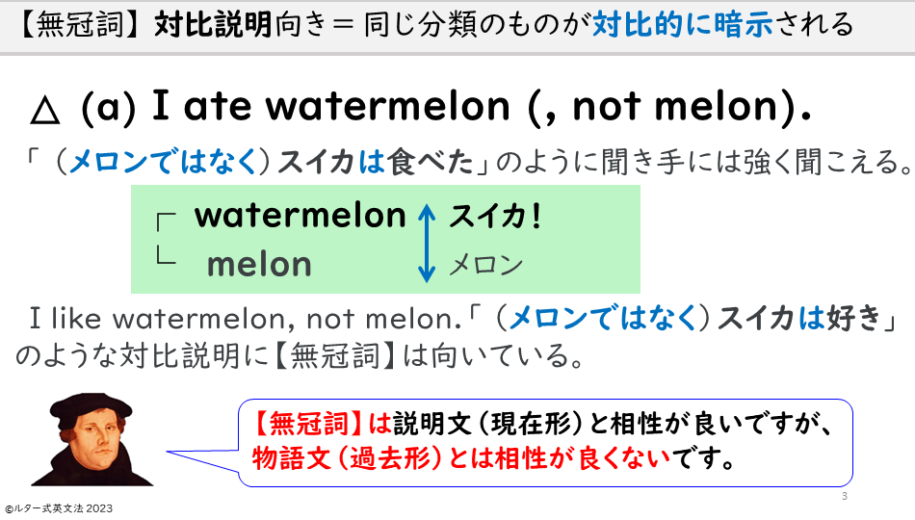
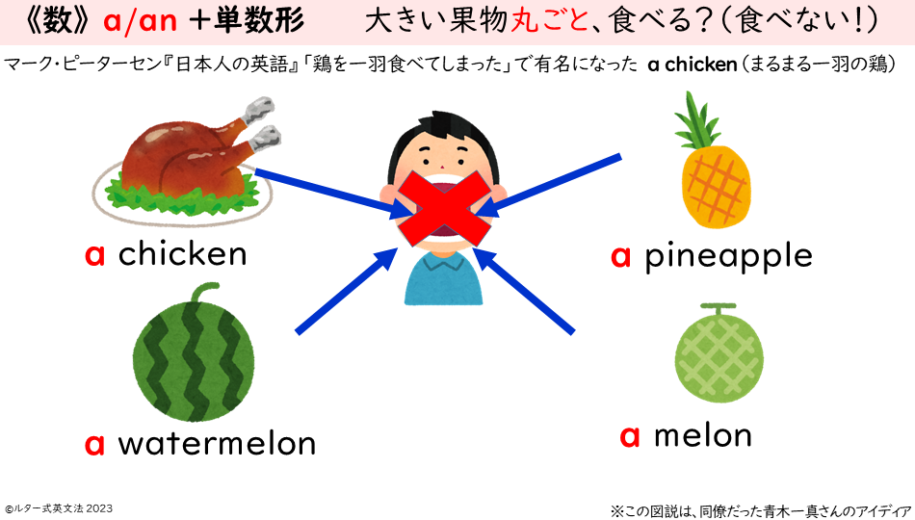
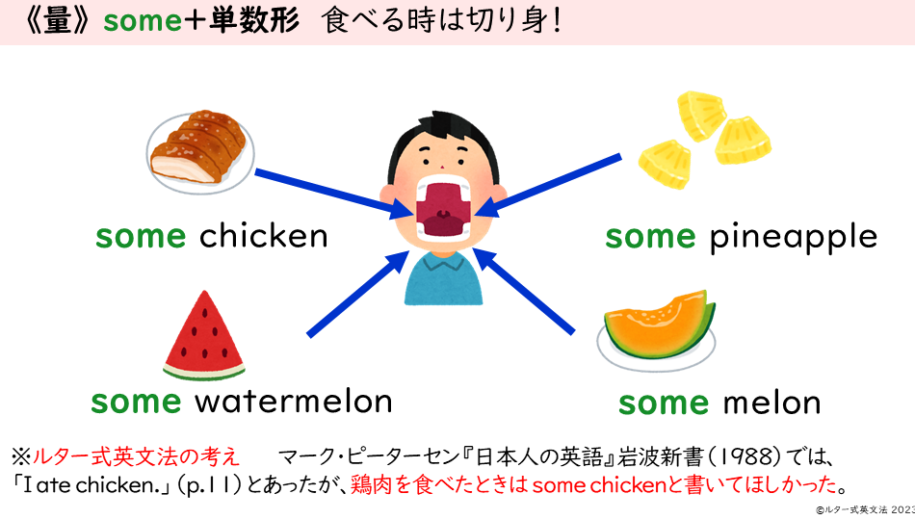
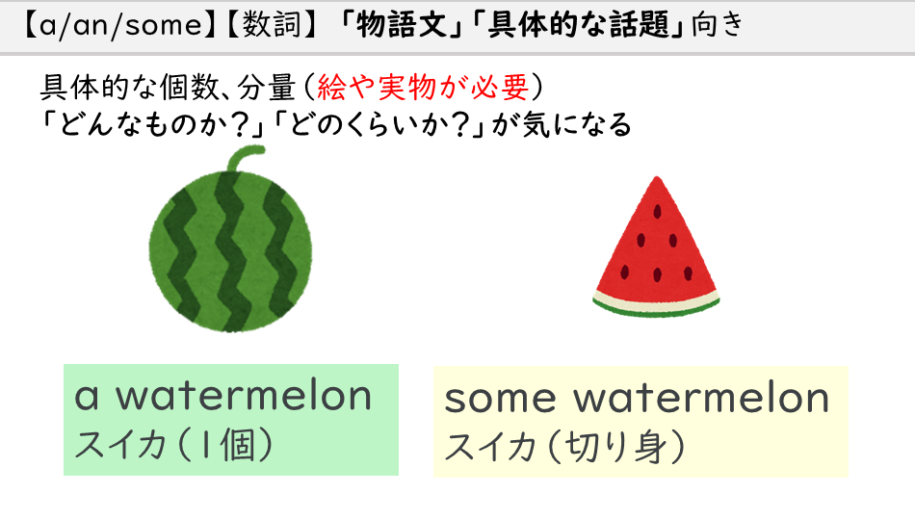
![[no article] is a contrast explanation, [some] does not imply other things being contrasted = only the thing under discussion is presented [no article] is a contrast explanation, [some] does not imply other things being contrasted = only the thing under discussion is presented](https://eibumpoluther.com/wp-content/uploads/2023/01/0ae7c62e50dc705df75843b104ce66cd-1-915x520.png)
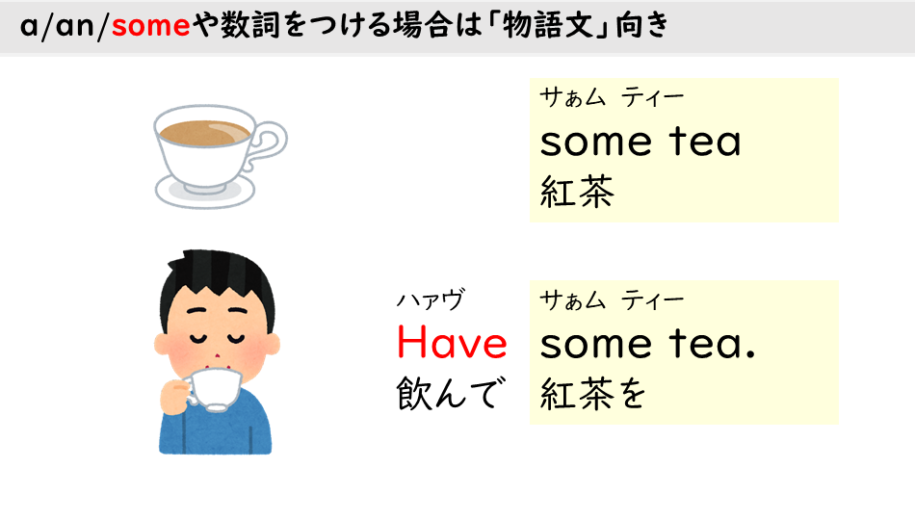
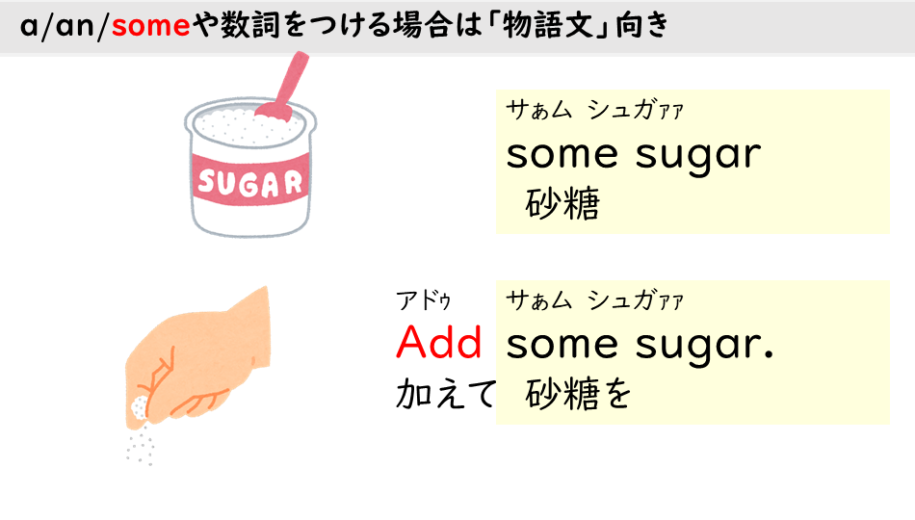

コメント